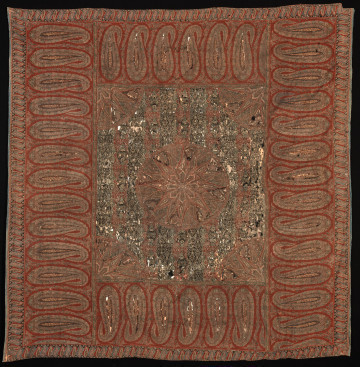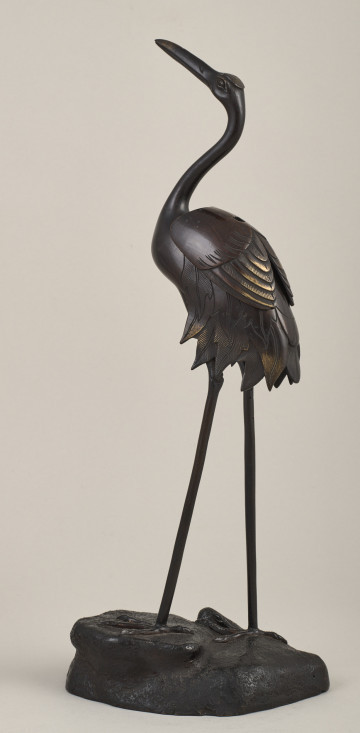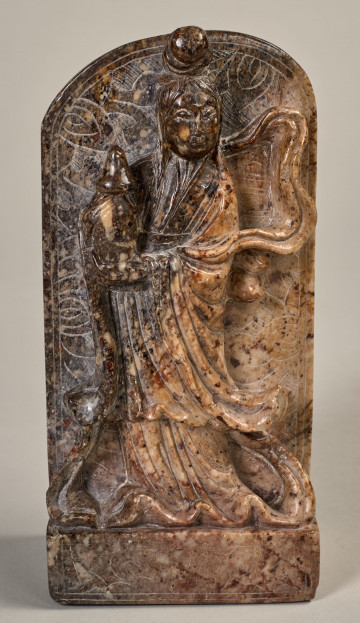
Tapestry
18th-19th century
Castle Museum in Łańcut
Part of the collection: Orient
Sculpture made of bovine bone depicting the Chinese deity of longevity, prosperity and abundance. It may be the Shoulao from Lan Ts ai Ho, holding a ju-i scepter in her right hand, known for its power to grant wishes. The sceptre is accompanied by a cord, braided into a flat, decorative knot. On the other side, there is a basket of flowers. A boy standing next to her holds a bowl of fruit and a panache. On the back of the deity is engraved a stylised script mark “shou”, which means longevity. The sculpture was formerly covered with a polychromy, some red and black traces are still visible. Underneath the figure, four script characters are engraved on the oval rim: Ta Ming nien tsao – made during the period of the great Ming dynasty. These marks indicate that the sculpture could not have been produced during the said dynasty, as the authentic dynastic signs – the so-called marks – contained two additional signs, indicating the name of the period of the current reigning emperor. China, 18th century.
Author / creator
Dimensions
height: 13 cm, width: 5.8 cm
Object type
Orient
Technique
sculpture
Material
bovine bone
Creation time / dating
Creation / finding place
Owner
Castle Museum in Łańcut
Identification number
Location / status

18th-19th century
Castle Museum in Łańcut

19th (?) century
Castle Museum in Łańcut

17th-18th (?) century
Castle Museum in Łańcut
DISCOVER this TOPIC
Museum of King Jan III's Palace at Wilanów
DISCOVER this PATH
Educational path